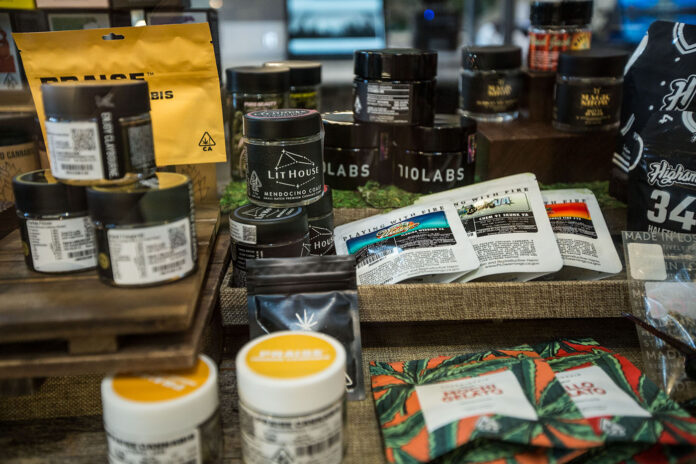
One of the key aspects of building a successful dispensary is creating a strong retail experience for consumers. This includes optimizing the store’s product catalog and managing the inventory appropriately. Offering consumers a smart mix of products can help generate more sales and increase margins.
Retailers hold differing opinions when it comes to the magic number of stock-keeping units (SKUs) dispensaries should carry, but Treez’s data indicates most of the suggested “ideal” counts are too high.
The average retailer offers around 1,500 SKUs, which is far too many for most dispensaries. There is a time and place for superstores that carry 1,000 SKUs or more, but data indicates more businesses will succeed with fewer. Based on my experience, the ideal number of SKUs ranges between 100 and 300, which is a much more manageable number for any retailer. Consumer brand preferences ultimately will become the driving factor bringing SKU counts down to the point where retailers can succeed with only 100 SKUs.
There are many reasons for retailers to focus on their SKU count, but reason number one is to avoid consumer confusion. According to numerous studies, too many options can overwhelm consumers and may lead to poor outcomes. In addition, every SKU a retailer carries must be addressed when purchasing, counting inventory, analyzing shelf space, educating budtenders, and so on. Merchandising thousands of SKUs effectively is extremely difficult.
For all those reasons, research shows retailers who offer too broad a selection spend too much money on products and often provide a poorer customer experience.
What’s paramount is for retailers to zero in on restocking the products customers are looking for before the stock runs out. Try using key metrics like sellable velocity, which shows units sold per day on days when there were units available in sellable locations. By focusing on that metric, you can prioritize the right SKUs and products to replenish and reduce inventory overhead.
Data also indicates about 33 percent of products make up 80 percent of the sales on an aggregate basis across the hundreds of stores operating on Treez’s point-of-sale system. That’s a significantly small percentage, especially when you take into account the figure factors in single-release products, brands that fail, and products a store stocks once and never again.
Retailers carrying fewer than 350 SKUs consistently sell more items per ticket than any other group, according to Treez data. Anything above the 500 SKU count results in fewer items per ticket. Research shows fewer SKUs help budtenders learn each product more in depth, resulting in more informed upselling to the consumer. In fact, among retailers who see tickets over $100, two-thirds are working with fewer than 500 SKUs.
The interaction between budtenders and consumers drives more than 80 percent of sales. As a retailer, you want to give budtenders the right tools to help them make better recommendations for the consumer. In the end, a well-educated budtender will keep consumers coming back, which will drive sales upward. The more SKUs, the harder that becomes. With fewer SKUs and more focus on the ones with that top sellable velocity, budtenders will be equipped to educate consumers and drive more sales.
Cannabis retail is really fascinating. Many opportunities exist to reimagine the customer experience by taking pages from the playbooks of other industries. Right now, it is important to stay focused on the retail challenges specific to cannabis—and there are plenty—but these unique problems will drive retail forward in the long run.
Simplicity is key. A great example is In-N-Out Burger. The fast-food burger chain is known for its limited assortment and for being one of the highest-grossing restaurants by square footage in existence. On the other end, BevMo! credits its alcohol-sales success to stocking thousands of SKUs.
Undoubtedly, there will be a “BevMo! of cannabis” one day, and there should be. However, this model does not represent what the typical consumer needs right now, especially those who are newer to shopping for cannabis in a retail environment. Someone buying alcohol for the first time gets lost in BevMo! and leaves feeling anxious. New cannabis users might feel the same way leaving a dispensary.
Simplicity is the answer for most retailers right now. Focusing on reducing SKU count to something manageable for your staff will lead to a smoother, more seamless, and more pleasurable shopping experience for customers.
 John Yang, an expert in enterprise cloud-commerce technology, co-founded Treez in 2016 in response to demand for cannabis-specific software solutions to automate workflows. Previously, he consulted at Slalom Consulting, where he specialized in program management, business improvements, software development, customer-relationship-management solutions, and business intelligence.
John Yang, an expert in enterprise cloud-commerce technology, co-founded Treez in 2016 in response to demand for cannabis-specific software solutions to automate workflows. Previously, he consulted at Slalom Consulting, where he specialized in program management, business improvements, software development, customer-relationship-management solutions, and business intelligence.
